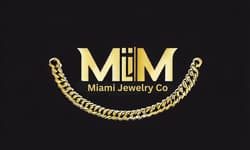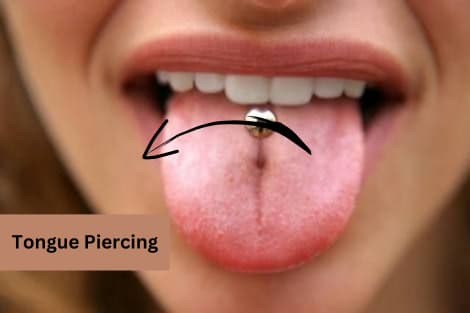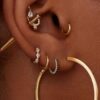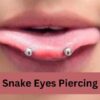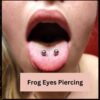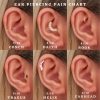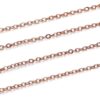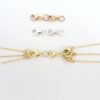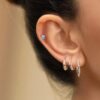Tongue Piercing
Tongue Piercings & Tongue Piercing Types Explained – Everything You Need to Know
Tongue piercings are one of the most popular and attractive forms of body modification. They can enhance your oral sensations, express your personality, and make you stand out from the crowd. But what are the different types of tongue piercings and how do they affect your tongue and mouth?
Here’s the good news: we’ve got your back. In this guide, we simplify the world of tongue piercings, ensuring you’re well-informed and ready to decide.
Stay with us as we explore:
- The history and cultural significance of tongue piercings.
- An overview of various tongue piercing types.
- Step-by-step aftercare routines to ensure smooth healing.
- Potential risks and how to mitigate them.
- Expert tips on choosing the right jewelry for your style and comfort.
By the end of this article, you will have a clear understanding of tongue piercings and be able to make an informed decision about whether or not to get one.
So, let’s get started!
Contents
- 1 Types of Tongue Piercings
- 2 Uvula Piercing:
- 3 The Tongue Piercing Process
- 4 Precautions and Hygienic Measures
- 5 Piercing Aftercare
- 6 How Much Does Tongue Piercing Cost?
- 7 What Jewelry is Best for Tongue Piercing?
- 8 How to Style Tongue Piercing
- 9 Pros and Cons of Tongue Piercing
- 10 Potential Complications – How to Spot Them and What Steps to Take
- 11 Risks and Considerations
- 12 FAQs
- 13 Final Words
Types of Tongue Piercings
A tongue piercing is a type of body piercing that involves inserting a metal barbell or ring through a part of the tongue. The tongue is pierced with a hollow needle that creates a hole for the jewelry to pass through. The jewelry is then screwed on or clipped on to secure it in place.
There are many types of tongue piercings that you can choose from, depending on your preference and anatomy.
Here are six of the most common ones:
| Type of Tongue Piercing | Piercing Location | Pain Scale | Healing Time | Average Cost |
|---|---|---|---|---|
| Midline | Center of the tongue vertically | Low | 4 to 6 weeks | $30 to $80 |
| Horizontal | Tongue horizontally from side to side | High | 6 to 8 weeks | $50 to $100 |
| Frenulum | Web of skin under the tongue | Low | 3 to 5 weeks | $30 to $80 |
| Side or Venom | Two points on each side of the tongue | High | 6 to 8 weeks | $80 to $120 |
| Snake Eyes | Both ends of a single barbell through two points at the tip of the tongue | High | 6 to 8 weeks | $50 to $100 |
| Scoop | Top or bottom surface of the tongue with a curved barbell | High | 6 to 8 weeks | $50 to $100 |
Midline Tongue Piercing
This is the simplest and most common type of tongue piercing. It passes through the center of the tongue vertically.
- Placement: It is usually placed near the tip or the middle of the tongue.
- Pain scale: It is relatively low on the pain scale, as it involves less tissue damage and nerve endings.
- Healing time: It takes about four to six weeks to heal completely.
- Average cost: It costs around $30 to $80, depending on where you get it done and what kind of jewelry you choose.
What Is The Safest Tongue Piercing?
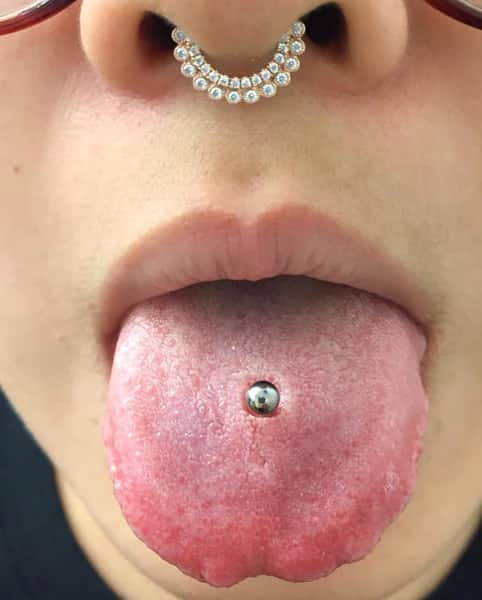
Horizontal Tongue Piercing
This is a more unusual and daring type of tongue piercing. It passes through the tongue horizontally from side to side.
- Placement: It is usually placed near the tip of the tongue, creating the illusion of two eyes or fangs.
- Pain scale: It is relatively high on the pain scale, as it involves more tissue damage and nerve endings.
- Healing time: It takes about six to eight weeks to heal completely.
- Average cost: It costs around $50 to $100, depending on where you get it done and what kind of jewelry you choose.
Related: Frog Eyes Piercing vs Snake Eyes
Frenulum Tongue Piercing / Tongue Web Piercing
This is a subtle and hidden type of tongue piercing. It pierces the web of skin under the tongue.
- Placement: It is usually placed near the base of the tongue, where it can be seen when you smile or lift your tongue.
- Pain scale: It is relatively low on the pain scale, as it involves less tissue damage and nerve endings.
- Healing time: It takes about three to five weeks to heal completely.
- Average cost: It costs around $30 to $80, depending on where you get it done and what kind of jewelry you choose.

Frog Eyes Piercing or Venom Tongue Piercing
This is a symmetrical and edgy type of tongue piercing. It pierces two points on each side of the tongue.
- Placement: It is usually placed parallel to each other near the edges of the tongue.
- Pain scale: It is relatively high on the pain scale, as it involves more tissue damage and nerve endings.
- Healing time: It takes about six to eight weeks to heal completely.
- Average cost: It costs around $80 to $120, depending on where you get it done and what kind of jewelry you choose.
Frog Eyes Piercing Video Guide
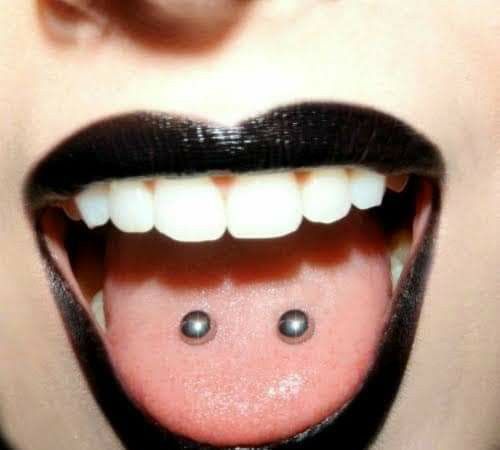
Snake Eyes Tongue Piercing
This is a variation of the horizontal tongue piercing. It pierces both ends of a single barbell through two points at the tip of the tongue.
- Placement: It is placed at the tip of the tongue, creating a snake-like appearance.
- Pain scale: It is relatively high on the pain scale, as it involves more tissue damage and nerve endings.
- Healing time: It takes about six to eight weeks to heal completely.
- Average cost: It costs around $50 to $100, depending on where you get it done and what kind of jewelry you choose.

Scoop Piercing / Surface Tongue Piercing
This is another name for the surface tongue piercing. It pierces the top or bottom surface of the tongue with a curved barbell.
- Placement: It is usually placed anywhere along the length of the tongue, creating a curved shape.
- Pain scale: It is relatively high on the pain scale, as it involves more tissue damage and nerve endings.
- Healing time: It takes about six to eight weeks to heal completely.
- Average cost: It costs around $50 to $100, depending on where you get it done and what kind of jewelry you choose.
Uvula Piercing:
This is a unique and less common piercing that targets the uvula, the small, fleshy piece of tissue that hangs down at the back of your throat.
- Placement: It is precisely placed on the uvula, which is visible when one opens their mouth wide.
- Pain scale: Uvula piercing can be quite painful due to its sensitive location. It’s also placed in a hard-to-reach area, making the procedure more challenging.
- Healing time: Due to the mouth’s naturally bacteria-rich environment, it may take around eight to ten weeks for a uvula piercing to heal, though some individuals report faster healing times due to saliva’s cleaning properties.
- Average cost: Uvula piercings can range from $70 to $150, contingent upon the piercer’s expertise, the studio’s location, and the type of jewelry chosen.
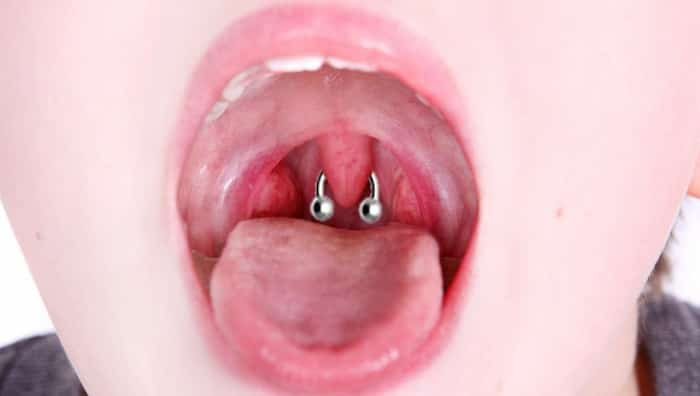
Tip: Due to its unusual location, it’s essential to consult with a highly experienced piercer before deciding on a uvula piercing.
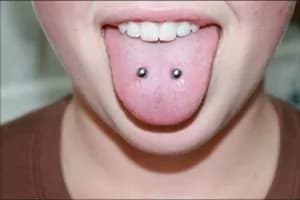
The Tongue Piercing Process
Are you curious about how tongue piercings are done? I was too, when I got mine! Here’s what you need to know before, during, and after the procedure.
How It’s Typically Done
- The first step is to choose a reputable piercing salon that follows all the health and safety regulations. You don’t want to risk any infections or complications!
- Once you’re there, you’ll sit in a comfortable chair, similar to a dentist’s. The piercer will ask you to rinse your mouth with an antiseptic mouthwash to clean your tongue.
- Then, the piercer will use clean tongs to pull out your tongue and mark the exact spot where the piercing will go. This might sound scary, but it’s not that bad!
- Next, the piercer will use a sterilized needle specifically designed for piercings and quickly pierce your tongue. Then, they will insert the jewelry of your choice.
The whole process is very fast and takes only a few minutes. You might feel a slight pinch or sting, but it’s not too painful.
Precautions and Hygienic Measures
To avoid any problems with your tongue piercing, you need to follow some precautions and hygienic measures.
- Before the piercing, make sure the piercer uses new, disposable needles and gloves. Don’t be afraid to ask them about their sterilization methods and equipment.
- After the piercing, don’t touch it with dirty hands. You might be tempted to play with it or show it off, but that can introduce bacteria and cause infections.
- For the first few weeks, rinse your mouth with saline solution or non-alcoholic mouthwash after every meal and drink. This will help keep the piercing clean and prevent food particles from getting stuck.
- Avoid spicy foods, alcohol, smoking, and oral sex for at least a month. These can irritate the piercing and delay the healing process.
Piercing Aftercare
Congratulations! You’ve got your tongue piercing. Now what?
First Week – What to Expect and What to Do
The most common thing you’ll experience in the first week is swelling. This is normal and nothing to worry about. It will go down gradually as your tongue heals.
To reduce the swelling, you can suck on ice chips or take anti-inflammatory drugs like ibuprofen. You can also elevate your head when sleeping to prevent blood from pooling in your tongue.
Another thing you might notice is some bleeding or bruising around the piercing site. This is also normal and should stop within a few days. Just make sure to keep the area clean and dry.
You might also have some difficulty speaking or eating at first. This is because your tongue needs some time to adjust to the new jewelry. Be patient and practice slowly. You’ll get used to it soon enough!
How Much Does Tongue Piercing Cost?
Base Pricing:
On average, a basic tongue piercing can range from $30 to $120. But remember, it’s not just about the piercing. It’s the overall experience.
Jewelry:
Sometimes, the jewelry cost is separate. You could spend anywhere from $10 for a basic barbell to $100+ for a diamond or gold piece.
Geographical Location:
Just like any other service, prices vary based on where you live. A piercing in New York City may be pricier than one in a smaller town.
Artist’s Expertise:
An experienced piercer, known for their craft, might charge more. But trust me, the assurance of quality is worth every penny.
What Jewelry is Best for Tongue Piercing?
Picking out jewelry for a tongue piercing isn’t just a frivolous decision. It’s the epicenter of your comfort, safety, and flair! I’ve tried and tested many, and based on my adventures, Here’s what I’ve gleaned:
What are the best materials for tongue piercing jewelry?
The best materials for tongue piercing jewelry are those that are hypoallergenic, durable, and comfortable.
- Titanium: Titanium stands out as a top pick. It’s lightweight, extremely biocompatible, and best of all, hypoallergenic. For someone like me, who has sensitive skin, titanium was a godsend.
- Surgical Steel: Another commendable option is surgical steel, especially the 316L variant. It’s also hypoallergenic and quite durable. However, if you have nickel sensitivities, be a tad cautious.
- Others to Consider: While titanium and surgical steel are frontrunners, you can also explore bioplast, which is flexible and can reduce the risks of tooth damage.
Size and Shape
- Barbell Length: Right after the piercing, you’ll notice the tongue tends to swell. This is where a longer barbell, typically around 18 mm to 20 mm, comes into play. It accommodates the swelling without causing undue pressure.
- After Healing: Once the swelling subsides and healing is underway, switch to a shorter barbell (around 14mm-16mm). This reduces the chances of accidental bites, which can damage both the jewelry and your teeth.
- Diameter: A typical gauge for tongue piercings is 14G. However, consult with your piercer, especially if you’re considering something thicker or thinner.
Style
- Straight Barbells: This is the classic look – simple, elegant, and comfortable. The balls at the end can be plain, colored, or even have logos.
- Flat Bead Barbells: Instead of the traditional round balls, these have flat ends. Ideal for those worried about potential damage to the teeth’s biting surfaces.
- Acrylic Balls: These are softer than metal balls, which might be more comfortable for some. Plus, they come in a plethora of colors!
- Gem-studded Tops: If you’re looking to add a touch of glam to your piercing, opt for barbells with gem-studded tops. They shimmer with every movement and are perfect for special occasions.
How to Style Tongue Piercing
So, you’ve taken the plunge, and now you’re eager to show off that tongue bling. Here’s how you can style it:
Jewelry Swap:
Once healed, experiment with different jewelry designs – from subtle to flamboyant.
Play with Colors:
Fancy a vibrant look? Consider colorful barbells or gemstones that match your mood or outfit.
Tongue Tattoo:
Yep, that’s a thing! Some folks get small tattoos on their tongue to complement the piercing.
Mouthwear:
Consider teeth jewelry or grillz to elevate your oral style game.
Pros and Cons of Tongue Piercing
Ah, the classic debate. Is getting a tongue piercing a yay or nay? Let’s weigh it out:
Pros:
- Self-Expression: It’s an instant statement-maker. Your mouth won’t just speak; it’ll dazzle!
- Unique Look: Not everyone has the guts for it, making you stand out.
- Versatility: The range of jewelry options means you can switch up your look frequently.
Cons:
- Pain & Discomfort: The initial piercing and healing period can be uncomfortable. And let’s not forget the occasional bite on the jewelry while eating.
- Oral Health Risks: If not cared for, piercings can lead to infections or damage to teeth.
- Workplace Perceptions: Not all professions or workplaces might be receptive to oral piercings.
Potential Complications – How to Spot Them and What Steps to Take
While most tongue piercings heal without any issues, there are some potential complications that you should be aware of and watch out for.
- Infection: This is the most serious risk of any piercing. It can cause pain, swelling, redness, pus, fever, or a bad smell around the piercing. If you notice any of these signs, don’t remove the jewelry. This can trap the infection inside and make it worse. Instead, see a doctor or your piercer as soon as possible. They will prescribe antibiotics or other treatments to clear the infection.
- Nerve damage: This is a rare but possible complication of tongue piercings. It can cause numbness, tingling, or loss of sensation in your tongue or mouth. It can also affect your taste buds or speech. If you experience any of these symptoms, see a doctor or your piercer immediately. They might suggest removing the jewelry or changing its position to avoid further damage.
- Teeth and gum issues: This is another possible complication of tongue piercings. The jewelry can rub against your teeth and gums and cause damage over time. It can cause chipped or cracked teeth, receding gums, or tooth decay. To prevent this, choose a small or soft jewelry that doesn’t touch your teeth or gums too much. You can also use plastic balls instead of metal ones on your jewelry. And of course, maintain good oral hygiene and visit your dentist regularly.
Can I get more than one tongue piercing?
Yes, you can get more than one tongue piercing if you want to create a unique look or enhance your oral sensations. However, you should consider the following factors before getting multiple tongue piercings:
The space and anatomy of your tongue:
You should have enough room on your tongue to accommodate multiple piercings without interfering with each other or causing damage to your oral tissues. –
The healing time and aftercare:
You should wait until your first tongue piercing is fully healed before getting another one. This can take anywhere from four to eight weeks. You should also follow the aftercare instructions carefully for each piercing to prevent infection or complications. –
The cost and maintenance:
You should be prepared to pay more for multiple tongue piercings than for a single one. You should also be ready to change out your jewelry regularly and keep it clean and hygienic.
Risks and Considerations
Before you get a tongue piercing, there are some things you need to consider and be prepared for.
Possible Health Complications
As mentioned above, tongue piercings can have some health complications if not done or cared for properly. You need to be aware of the risks and take the necessary precautions to avoid them.
Professional and Social Perceptions
Depending on your job or cultural setting, there might be some negative perceptions or stigmas attached to tongue piercings. Some employers or people might not approve of them or find them inappropriate. You need to consider the potential reactions and consequences of having a tongue piercing in your professional and social circles.
Changing and Choosing Jewelry
If you want to change or choose your jewelry for your tongue piercing, there are some things you need to keep in mind.
Materials to Consider
The best materials for tongue piercings are hypoallergenic ones like titanium, niobium, or surgical stainless steel. These are less likely to cause allergic reactions or infections. Avoid materials like gold, silver, or copper, as they can tarnish or corrode in your mouth.
When and How to Change Your Piercing
You should wait until your tongue piercing is fully healed before you change your jewelry. This usually takes around 4-6 weeks. Changing it too soon can cause irritation or infection.
When you change your jewelry, make sure to use clean hands and tools. Wash your mouth with antiseptic mouthwash before and after the process. And don’t forget to clean your new jewelry before inserting it.
FAQs
What’s the best type of tongue piercing?
The best type of tongue piercing often depends on individual preference and anatomy. However, the most common and popular type is the midline piercing, located centrally on the tongue. For those looking for something unique, there are other options like venom piercings (two side-by-side piercings) or frenulum piercings underneath the tongue.
What is the safest tongue piercing?
The midline tongue piercing is generally considered the safest due to its central location, which minimizes the risk of nerve damage or interfering with dental structures. Regardless of the type, ensuring you go to a reputable piercer and following strict aftercare guidelines is crucial to ensure safety.
How painful is a tongue piercing
The pain level of a tongue piercing varies depending on your pain tolerance, anatomy, and type of piercing. Generally speaking, most people describe the pain as a sharp pinch or sting that lasts for a few seconds. The tongue may feel sore or swollen for the first few days, but this should subside gradually. You can use ice, cold water, or over-the-counter painkillers to ease the discomfort.
What are tongue piercings good for?
Tongue piercings are primarily a form of self-expression and aesthetic appeal. Throughout history, they’ve also held cultural and spiritual significance in certain societies. Some individuals also believe they enhance sensory pleasure, especially in intimate settings. It’s essential, however, to understand the risks and benefits before deciding on a tongue piercing.
How long do I have to wait before I can eat or drink normally after a tongue piercing?
You should avoid eating or drinking anything for at least an hour after getting a tongue piercing to allow the piercing to settle and prevent irritation. After that, you can eat or drink soft, bland, and cold foods and drinks for the first few days, such as yogurt, ice cream, smoothies, or soup. You should avoid spicy, acidic, or hot foods and drinks, as well as crunchy, sticky, or hard foods that could damage your piercing or get stuck in it. You should also avoid alcohol, caffeine, and tobacco, as they can slow down the healing process and increase the risk of infection.
How do I know if my tongue piercing is infected?
Some signs of infection in a tongue piercing are: – Redness, swelling, or warmth around the piercing site that does not go away after a few days – Yellow, green, or foul-smelling discharge or pus coming from the piercing site – Fever, chills, or nausea – Difficulty breathing, swallowing, or speaking If you notice any of these symptoms, you should contact your piercer or doctor as soon as possible. They may prescribe antibiotics or other treatments to clear up the infection. You should also keep rinsing your mouth with saline solution or alcohol-free mouthwash and avoid touching or playing with your jewelry.
Final Words
In the realm of self-expression through body modification, tongue piercings have carved out a distinct space, marrying both aesthetic appeal and personal significance. With a diverse range of types to choose from, each offers a unique statement about the individual. Whether you’re considering the traditional midline or venturing into the more unique venom piercings, knowledge is power. Being informed about the nuances, safety measures, and aftercare of each type ensures that your piercing journey is both fulfilling and free from unnecessary complications. Embrace the world of tongue piercings with confidence, armed with all you need to know.
References:

Camila Luna is a passionate jewelry enthusiast and content creator at Miami Jewelry Co. With a focus on providing high-quality, Miami-style jewelry, Camila and her team specialize in a wide range of jewelry that includes bracelets, necklaces, earrings, and more
